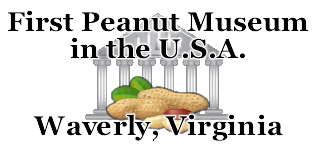History Of The Miles B Carpenter MuseumTranscribed From Grant Proposal And Other Museum Sources And Edited Before his death Miles B. Carpenter let it be known that he wanted his house and the attached property to be used in such a manner that all peoples could enjoy. He died in May 1985, and, in accordance with his wishes, the property was tendered to the Town of Waverly, which declined the offer. Miles S. Carpenter, the surviving son, then offered the property to the Waverly Woman’s Club. The late Elizabeth Stahl Carpenter, Miles’ wife, had been a charter member of the Club. The Club accepted the property and established The Miles B. Carpenter Museum in 1986. Members of the Museum Charter Board were Mrs. Virginia K. Rowe, Mrs. Evelyn W. Cowling, Mrs. Frances B. Gray, Mrs. Shirley S. Yancey, and Rebecca D. Massie. The Museum was incorporated as a 501(c)(3) not-for-profit organization on June 22, 1988. In May 1989 the Miles B. Carpenter House was registered as a Virginia Historic Landmark, and in December the property was placed on the National Register Of Historic Places by the United States Department Of The Interior. The Folk Art Society Of America designated the Museum a national folk art site in May 2000. The Museum serves and promotes the arts in the immediate communities of Sussex, Surrey, and Prince George Counties and the greater Petersburg tri-city area. It is open year-round and receives visitors from all over the United States and the world. Miles B. Carpenter BiographyCompiled And Edited From Miles B. Carpenter’s Autobiography, Miles Burkholder Carpenter was born May 12, 1889 to Wayne M. Carpenter and Lizzie Carpenter (neé Burkholder) at Cedar Hill Farm near Brownstown in Lancaster County, Pennsylvania. He was the eighth of eleven children, the fourth of seven boys. His family moved to Virginia in 1902 and settled on a farm two miles east of Waverly. In 1912 Miles bought an abandoned canning factory in Waverly and converted it for lumber finishing. On May 19, 1915 Miles married Mary Elizabeth Stahl. They had a son, Miles Stahl Carpenter, born August 28, 1916. A successful businessman Miles began recreational carving in 1940 when the lumber business slumped. He attributed his prodigious output to encouragement from his wife, but his early carving was short-lived. He quit carving in 1942 when his business picked up with the war. He retired from lumbering altogether in 1955 and opened a roadside stand selling ice, soda pop, and produce. To draw customers from the highway he carved his signature watermelon trade sign, a huge 200-pound watermelon displayed on a hand trolley. The Abbey Aldrich Rockefeller Folk Art Center acquired the trade sign for its permanent collection in 1973. With the passing of his wife Elizabeth on November 5, 1966, Miles resumed steady carving to ease his bereavement. In 1972 Miles was approached for representation by Jeffrey Camp of the American Folk Art Company. He agreed and Mr. Camp remained his agent for life. That same year Lester Van Winkle, professor of sculpture at Virginia Commonwealth University, bought some pieces from Miles. These made their way into the collection of Herbert Waide Hemphill, Jr., founder and curator of the Museum Of American Folk Art, who in turn placed Miles’ work in that museum’s 1973 show, Art Of The Occult. In 1974 Miles was given his first one-man exhibit at the Anderson Gallery of Virginia Commonwealth University. He was included in the 1976 Folk Sculpture USA show at the Brooklyn Museum Of Art. In 1981 his work was exhibited in the Narrative Wood show at the Corcoran Gallery Of Art. The next year the Peninsula Fine Arts Center curated a retrospective, Miles Carpenter, A Retrospective 1940-1982. In 1984 the Crocker Art Museum included Miles’ work in its Contemporary Wood Sculpture show, which went on to tour the United States for two years. Nineteen eighty-two proved to be a banner year for Miles. He was one of the first of two unschooled artists to receive a grant from The National Endowment For The Arts. Another honor was being received by President Reagan at the White House, where Miles presented his Tax Cut assemblage to the President. Miles’ autobiography, Cutting The Mustard, was also published and distributed nationally that year. Miles’ work has been acquired by many prestigious collections. Besides those already mentioned, these include the Chase-Manhattan Bank Folk Art Collection and the Museum Of International Folk Art. Miles B. Carpenter died on May 7, 1985. Five days later he was buried on his 96th birthday beside his wife Elizabeth. |

